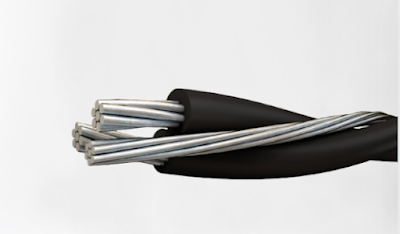What is Type 2S cable?
 |
| Type 2S cable |
Understanding Type 2S Cable
Type 2S cable, also known as 2S cable or simply "Type 2," refers to a specific category of electrical cable designed for various applications. It is a type of low-smoke, zero-halogen (LSZH) cable, characterized by its composition and performance attributes. The "Type 2" designation indicates compliance with specific standards and regulations, ensuring reliability and safety in diverse environments.
Composition and Characteristics
Type 2S cable is engineered with precision, incorporating materials chosen for their unique properties and benefits. The cable typically consists of several key components:
Conductors: Conductors in Type 2S cable are usually made of high-quality copper, known for its excellent conductivity and durability. Copper conductors ensure efficient transmission of electrical signals while withstanding various environmental conditions.
Insulation: Insulation materials in Type 2S cable play a crucial role in preventing electrical leakage and ensuring safety. LSZH insulation is a hallmark of Type 2S cable, offering low smoke emission and zero halogen content in case of fire. This feature makes Type 2S cable ideal for applications where smoke and toxic gas emissions pose significant risks, such as enclosed spaces and sensitive environments.
Sheath: The outer sheath of Type 2S cable provides additional protection and durability. It is designed to resist abrasion, moisture, and other external factors that could compromise the integrity of the cable. The sheath material is carefully selected to meet stringent standards for performance and safety.
Applications and Use Cases
Type 2S cable finds application across various industries and sectors, thanks to its unique properties and benefits. Some common use cases include:
Building Infrastructure: Type 2S cable is widely used in building infrastructure, including commercial and residential projects. Its low-smoke, zero-halogen characteristics make it a preferred choice for wiring in enclosed spaces such as offices, hospitals, and residential buildings. In the event of a fire, Type 2S cable minimizes the release of harmful smoke and gases, enhancing safety for occupants and emergency responders.
Transportation: The transportation sector relies on Type 2S cable for various applications, including railway systems, airports, and automotive manufacturing. Its flame-retardant properties and resistance to environmental factors make it suitable for use in vehicles, signaling systems, and infrastructure projects where safety is paramount.
Data Centers: Type 2S cable is increasingly used in data centers and telecommunications facilities, where strict standards for fire safety and environmental impact apply. Its LSZH insulation reduces the risk of smoke-related damage to equipment and ensures uninterrupted operation in critical infrastructure settings.
Industrial Settings: Industrial environments often require cables that can withstand harsh conditions and maintain reliable performance. Type 2S cable meets these requirements, making it suitable for use in factories, power plants, and other industrial facilities where safety and durability are essential.
Why Type 2S Cable Matters
Type 2S cable offers several advantages over traditional cable types, making it a preferred choice for modern electrical installations. Here are some key reasons why Type 2S cable matters:
Safety: The low-smoke, zero-halogen properties of Type 2S cable enhance safety in various settings by minimizing the release of toxic gases and smoke in the event of a fire. This feature is especially critical in enclosed spaces where occupants may be at risk of smoke inhalation.
Compliance: Type 2S cable complies with stringent standards and regulations governing electrical installations, ensuring reliability and peace of mind for designers, engineers, and building owners. Its adherence to industry standards makes it a trusted solution for diverse applications.
Durability: Type 2S cable is designed to withstand environmental factors such as moisture, heat, and abrasion, ensuring long-term reliability in challenging conditions. Its robust construction minimizes the risk of damage and ensures consistent performance over time.
Environmental Impact: The use of LSZH materials in Type 2S cable reduces its environmental impact compared to conventional cables. By minimizing the release of halogenated compounds and other harmful substances, Type 2S cable supports sustainability efforts and reduces ecological footprint.
Conclusion
In conclusion, Type 2S cable represents a significant advancement in electrical engineering, offering enhanced safety, reliability, and performance across various applications. Its low-smoke, zero-halogen characteristics make it a preferred choice for modern infrastructure projects where safety and environmental impact are paramount. Whether in building construction, transportation systems, data centers, or industrial settings, Type 2S cable continues to play a crucial role in powering the world's interconnected systems. As technology evolves and standards evolve, Type 2S cable remains at the forefront of innovation, driving progress and ensuring a safer, more sustainable future for generations to come.


Comments
Post a Comment